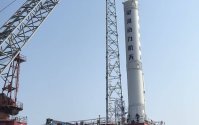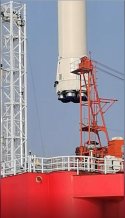by78
General
Yet another launch vehicle startup. The name is Beijing ZenkSpace (北京空间致航科技有限公司). Not much is known about the company except the name first appeared in 2019.
Below are images from a presentation given by the company:
– Its first rocket (liquid fuel) will make its maiden flight in 2025.
– A medium and a large launch vehicle are being developed in parallel, covering payload capacities of one to 12 tons (to LEO?).
– The company aims for launch cost of ¥25,000 to ¥30,000 per kilogram.
– The company has a novel reusable rocket design. If I'm reading this correctly, the 1st-stage engines are recovered separately. That is, the entire engine assembly (without the fuel tank) detaches from the rocket, re-enters the atmosphere, and makes a parachute landing.


ZenkSpace (a.k.a. Zhihang Technology) will launch its Zhihang-1 (ZH-1) rocket before the Chinese New Year. Zhihang-1 is a three-stage, 3.35m-diameter rocket burning LOX/Kerosene, with a length of 49m, a take-off thrust of 320 tons, and capacity to SSO of 4 tons. No other information is known as this point regarding reusability or the engines used. The company is also developing the Zhihang-2 launch vehicle (concurrently with Zhihang-1), which is basically a lengthened Zhihang-1 with strap-on boosters and has a capacity to SSO of 12 tons. A third rocket is also under development, which will have a diameter of 5m and a capacity to SSO of 18 tons, and the assembly of a prototype is expected in 2026.





















